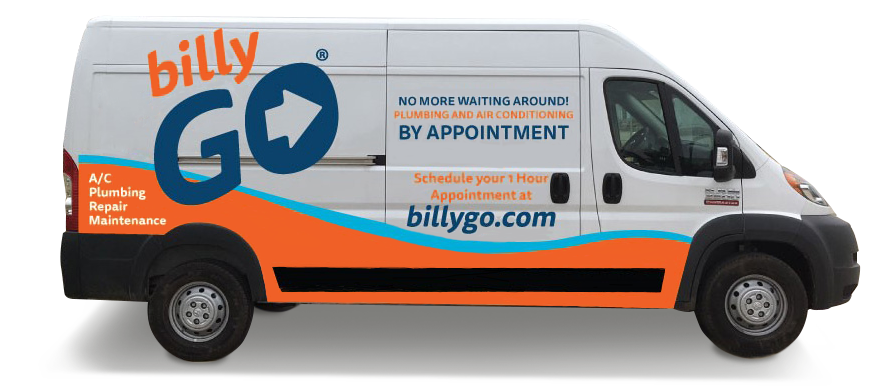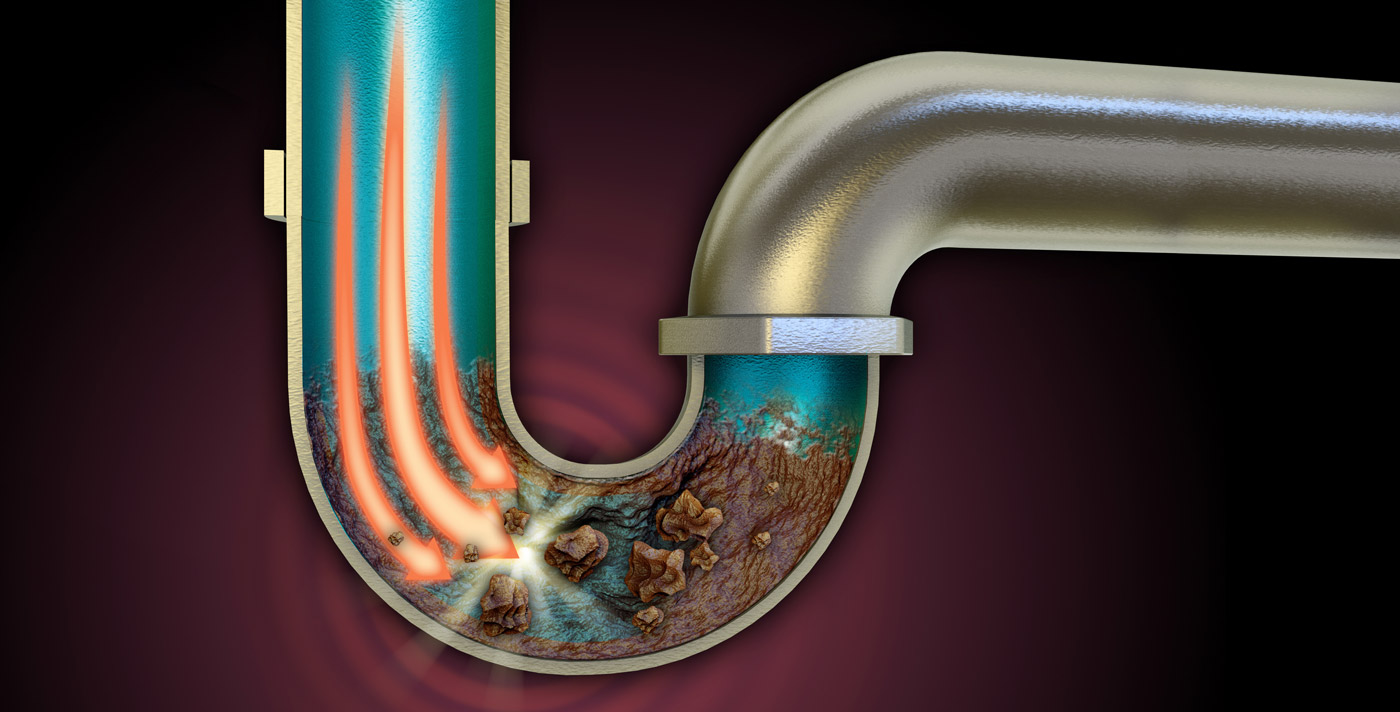When people ask us how to unclog drains, we tell them the easiest way is to avoid getting them stopped up in the first place. That’s the truth, but it doesn’t help much when you have water standing in your kitchen or bathroom sink.
So, let’s consider how to solve the immediate problem and then see how to avoid clogged drains in the future. We are in the plumbing business and would love to serve you with professional drain and sewer cleaning service, but you may save yourself a service call if you try one or two DIY fixes first.
The big takeaway: please do not pour harsh liquid chemical drain cleaners down your drains. They may provide some temporary relief, but they can seriously damage your home’s plumbing system – and some emit dangerous fumes, as well.
What Causes Clogged Drains?
All clogs are not created equal. A clogged kitchen sink may be caused by a build-up of fat, oil, and grease (FOG), food particles or a combination of the two. Over time, grease and food particles adhere to the inside of the drainpipe, building up and slowing the flow of water, the way cholesterol and plaque block arteries.
Bathroom sink and shower clogs are nearly always some combination of soap scum and hair, which cling to the insides of bathroom drain the way fat, oil and grease clog up kitchen sink drains. When hair strands stick in the soap scum a clog can develop rapidly.
Add in beard stubble and shaving gel, plus food particles and toothpaste from brushing and the clot thicken. Prevention starts with running enough water down the drain to carry this gooey combination past the P trap (the U-shaped piece of pipe beneath the drain) and into the larger sewer line.
Try a Plumber’s Helper First…
Before you do anything else to unclog a drain, try to blast the clog loose with the plumber’s helper – a plunger. If the clog is small, this may be all you need. Place the plunger over the drain hole, making certain it is entirely covered by water.
Keep the plunger vertical and the base of the cup in contact with the sink, then use up-and-down strokes to use vacuum pressure in the line to dislodge the clog. If the sink has an overflow hole, cover it to maintain air pressure in the drain pipe. Likewise, when working on a double sink; cover the other drain.
If you are working on a clogged toilet the same principles apply. For best results with toilet clogs, you may want to use a plunger with an additional flange on the cup. The flange fits into the bottom of the toilet bowl to help keep a tight seal. In stores they usually are displayed with the flange tucked up inside the cup. You may dislodge a clog in a few strokes with a plunger but be prepared to give it several minutes of pumping.
…Or a Plumber’s Snake…
If the plunger fails, try a plumber’s snake (a flexible steel auger that dislodges and retrieves clogs). If you don’t have one, you can improvise with a wire clothes hanger. Straighten it and bend a small hook on one end. If the clog is in the P trap, you may be able to snag it with this tool. Be careful not to get the hanger stuck.
…Then Get a Plumber
If your drain is still clogged, this would be a good time to enlist the help of a professional plumber. You may be dealing with a bigger clog than a plunger or small auger can dislodge. If you don’t have a plunger, or you want to try a different approach, there are some safe and environmentally-friendly options but do not use liquid chemical drain cleaners. They are highly caustic and can damage your plumbing system.
Non-caustic Solutions to Unclog a Drain
Vinegar and baking soda – If you have been researching how to unclog drains for even a few minutes you will have discovered a wealth of articles that advocate baking soda and vinegar to break up drain clogs. But is that really effective? It depends on the type of clog.
Consider what happens when you mix them. You get an acid-base chemical reaction that produces a fizzy froth that can eat into clogs to break them up. Baking soda (sodium bicarbonate) is the base; vinegar contains acetic acid. This forms carbonic acid that immediately begins to decompose and turns into water and carbon dioxide gas, so all the clog-busting action comes at the beginning and tapers off fast.
Vinegar and baking soda may be effective for soap scale buildup but won’t do much for a FOG clog. You may have noticed that many of the articles say to pour very hot water down the drain before the vinegar and baking soda. The hot water does more to soften the clog than the chemical reaction.
Hot water and detergent – A FOG clog will respond better to a mixture of near-boiling water and a liquid detergent. Bring two quarts of water to a boil, shut off the heat and wait a minute. Then stir in four or five tablespoons of liquid dishwashing detergent. Pour the solution down the clogged drain slowly and follow that with hot tap water.
The hot water softens the fat, oil and grease and the detergent works to dissolve it. Depending on the extent of the clog, you may have to repeat the process several times.
Hot water and salt – Table salt combined with near-boiling water can be effective to unclog drains in kitchens and bathrooms. The hot water softens and melts, while the abrasiveness of the salt works to scour out the buildup.
As with the hot water and detergent solution, boil two quarts of water first. Pour a half cup of table salt down the clogged drain, and then slowly pour the hot water down the drain. Follow up with hot tap water. You may need to repeat this process several times.
Biological drain cleaners – There are a number of biological drain cleaning products commercially available to provide safe, effective treatment of clogged or slow drains. These products contain enzymes or bacteria, or both, which attack the organic matter in a clog.
Biological products are effective on kitchen and bath clogs, and also are safe to use with septic systems because they do not harm beneficial bacteria. Regular use will help prevent clogs.
An Ounce of Prevention
Having removed a clog by yourself or with the help of a plumber, you won’t be anxious for a repeat performance. So, what can you do to prevent clogs?
- Installing hair filters in the bathroom sink and shower drains can do wonders. Look online or visit a hardware store to get an idea of the variety of devices available. Take time to pluck loose strands of hair from sinks when you see them.
- Never use hot water with your garbage disposal. It will melt grease that will solidify in layers in the disposal drain pipe. Avoid putting greasy food waste through the food disposer as much as possible.
- Do not put liquid fat, oils, and grease down any drain, for the same reason.
- Certain types of food waste never should go in your disposal, including celery, eggshells, potato peels, pasta, banana peels, and onion peels.
- Use a biological drain cleaner regularly to clean out FOG and soap scale buildup before it becomes a problem.
Please see this page for more about billyGO’s professional drain and sewer cleaning services to unclog drains.


